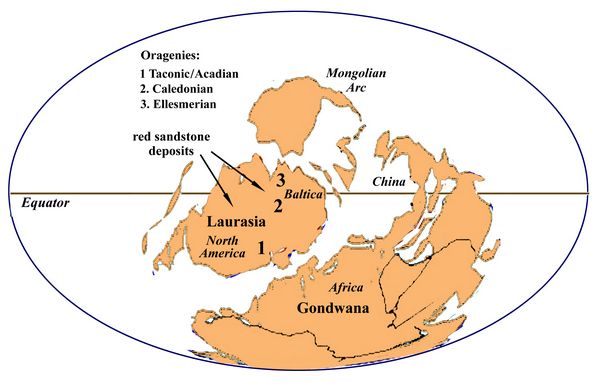Athena Review Image Archive ™
Early Devonian globe (400 mya)

Early Devonian globe at ca. 400 mya (map: Athena Review)
The Devonian period (419-359 mya), originally named for fossils and rock formations found in Devon in southern England, was defined by Roderick Murchison and Adam Sedwick between 1830-1840. They identified the Devonian period with red and brown oxidized sedimentary deposits known as the Old Red Sandstone.
The Devonian period saw major shifting of continental plates related to undersea tectonic and volcanic action. Convergence of the continents of North American and Baltica in the Early Devonian created the continent called Laurasia, which contained large zones of arid, near desert conditions. This is the source of the Old Red Sandstone beds, which contain hematite, typical of drought conditions.
The
collision of continental plates also caused the Taconic and Caledonian
orgenies, resulting in the uplift of the northern Appalachian mountains
of New York state and Canada, and the Caledonian mountains in the
British Isles and Scandanavia. By the Permian period, Laurasia and
Gondwana would merge into the supercontinent Pangaea.
References
Clack, Jennifer 2012. Gaining Ground
.Copyright © 1996-2020 Rust Family Foundation (All Rights Reserved).